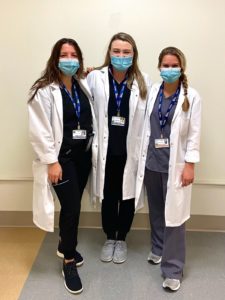Selecting accurate medical and treatment diagnosis codes are incredibly important when evaluating and documenting a plan of care for patients in the SNF setting. This is critical for both billing purposes, as well as accurately developing a patient’s profile and course of treatment. The evaluating therapist must document the correct codes, and understand how they interact.
The Difference Between Diagnosis and Treatment
Since writing this article back in early 2019, so much in the world of skilled nursing facilities has changed. PDPM was still in the planning stages, now it is standard operating procedure for Medicare Part A patients.
So, let’s look at this scenario again.
UPDATE:
In order to adapt to the documentation requirements to optimize PDPM reimbursement in the SLP Component, I would recommend slightly modifying the previous recommendation. In order to clearly document when there is a dysphagia that qualifies as an SLP comorbidity (ie. any type of dysphagia following a cerebrovascular disease) we should move the “dysphagia I-code” up to the medical diagnosis. Then specify the type of dysphagia using the “dysphagia R-code” as our treatment diagnosis.
Using the previous patient as an example, we recommend the coding as follows:
The medical diagnosis would have been determined by the MD in the hospital:
I63.412 Cerebral infarction due to embolism of a left middle cerebral artery.
I69.391 Dysphagia following cerebral infarction
If the Dysphagia code is not currently in the EMR’s active diagnosis list, the SLP should discuss having this code added to the medical records.
The treatment diagnosis may consist of:
R13.12 Dysphagia, oropharyngeal phase
Having both the “I-code” and the “R-code” listed in the medical records will ensure that we are diagnosing the type of dysphagia (oral vs. oropharyngeal etc) while also indicating that the dysphagia was a result of the cerebrovascular etiology.
ORIGINAL POST:
Diagnosis Vs. Treatment
First, let’s consider the difference between the medical and treatment diagnosis.
Medical diagnosis:
- Determined by a medical professional such as a physician or nurse practitioner
- Identifies a disease or a medical condition
- Provides information about the patient’s pathology
Treatment Diagnosis:
- Selected by the evaluating PT, OT, or ST
- Represents the patient’s functional limitation as a result of the disease or medical condition
- Should identify the signs, symptoms, and/or conditions that the therapeutic intervention is treating
Now let’s look at an example of a medical diagnosis vs a treatment diagnosis, and how they interact.
Patient X is admitted to a SNF after an acute hospital stay following an L MCA stroke.
The medical diagnosis would have been determined by the MD in the hospital:
I63.412 Cerebral infarction due to embolism of a left middle cerebral artery.
When that patient is evaluated by the Speech-Language Pathologist in the SNF setting, they may identify numerous functional deficits as a result of the medical diagnosis of I63.412.
The treatment diagnosis may consist of:
I69.320 Aphasia following cerebral infarction
I69.322 Dysarthria following cerebral infarction
I69.391 Dysphagia following cerebral infarction
What is the Difference Between Diagnosis and Treatment?
In this case, the medical diagnosis (CVA) identifies the pathology, and all three treatment diagnoses (aphasia, dysarthria, and dysphagia) are the complimentary diagnoses that indicate the functional change that occurred as a result of the patient’s stroke and will be targeted during the therapeutic intervention. Having an accurate medical and treatment diagnosis will provide the therapist with a clear picture of what they are treating and why.
I hope this article helps provide some clarity. Have any thoughts or questions? I’d love to hear. Feel free to comment in the box below.
About the Author: Originally from Port Jefferson, New York, Jennifer Baquet Maher, MA, CCC-SLP has a Master’s Degree from St. John’s University’s Communication Sciences and Disorders program. Jennifer and her husband live on Long Island with their 2 children. In her spare time, Jen also enjoys cooking and traveling.




Jen, This is outstanding insight. Understanding these concepts is difficult for people. thanks for your help!